Bike Commuting Distance: What’s Too Far in 2025? (Expert Guide)
The shocking statistic that might surprise you: the average American bike commuter travels just 5.5 miles to work, yet 52% of all car trips in the US are under 2 miles! That’s according to new data from the Bureau of Transportation Statistics, and it reveals a massive opportunity for more people to ditch their cars for two wheels.
But here’s the million-dollar question I hear about constantly online: “How far is too far to bike to work?” Or do I have to move to bike comfortably? As someone who’s been bike commuting and can teach a few bike safety tips for over three years—from short 1 to 2-mile jaunts to longer 16-mile round trips. I can tell your bike commuter guide might be different thank someone elses. Your ideal commuting distance depends on a complex mix of factors including your time, comfort ability, energy, and weather conditions.
The beauty of bike commuting lies in its flexibility and adaptability! Whether you’re considering a quick 2-mile neighborhood cruise or my past 12 miles round-trip journey, understanding the sweet spot for your daily rides can transform your commute from a dreaded necessity into the highlight of your day. Let’s dive deep into finding your perfect bike commuting distance and explore strategies that’ll make even longer distances totally manageable.
What is the Average Bike Commuting Distance in 2025?
You’ll find that on Reddit, and other platforms the average bike commute distance in the U.S. is around 5 – 8 miles one way—and that sounds pretty short when thinking from a driving perspective! However, I tried commuting on this 8 mile trip in the past for a restaurant phenomenon I like going to and I drove once in the past. It took a whole hour to get there.
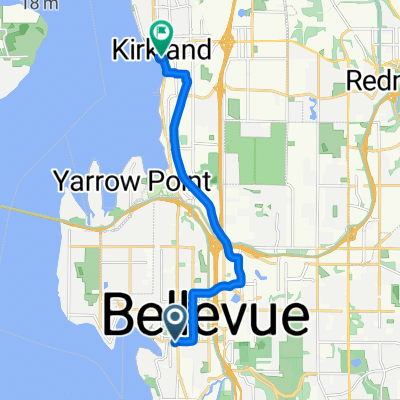
According to the latest data from the League of American Bicyclists, about 60% of bike commuters in 2025 are now traveling less than 5 miles, compared to just 45% in 2019. That’s a huge shift! The whole work-from-home thing made people realize they didn’t need to tackle those monster commutes anymore.
Biking in the City Versus the Suburbs
In cities like Portland or San Francisco, the average bike commute is around 4.2 miles because everything’s more compact. But in suburban areas—and I learned this the hard way when I moved to the suburbs.
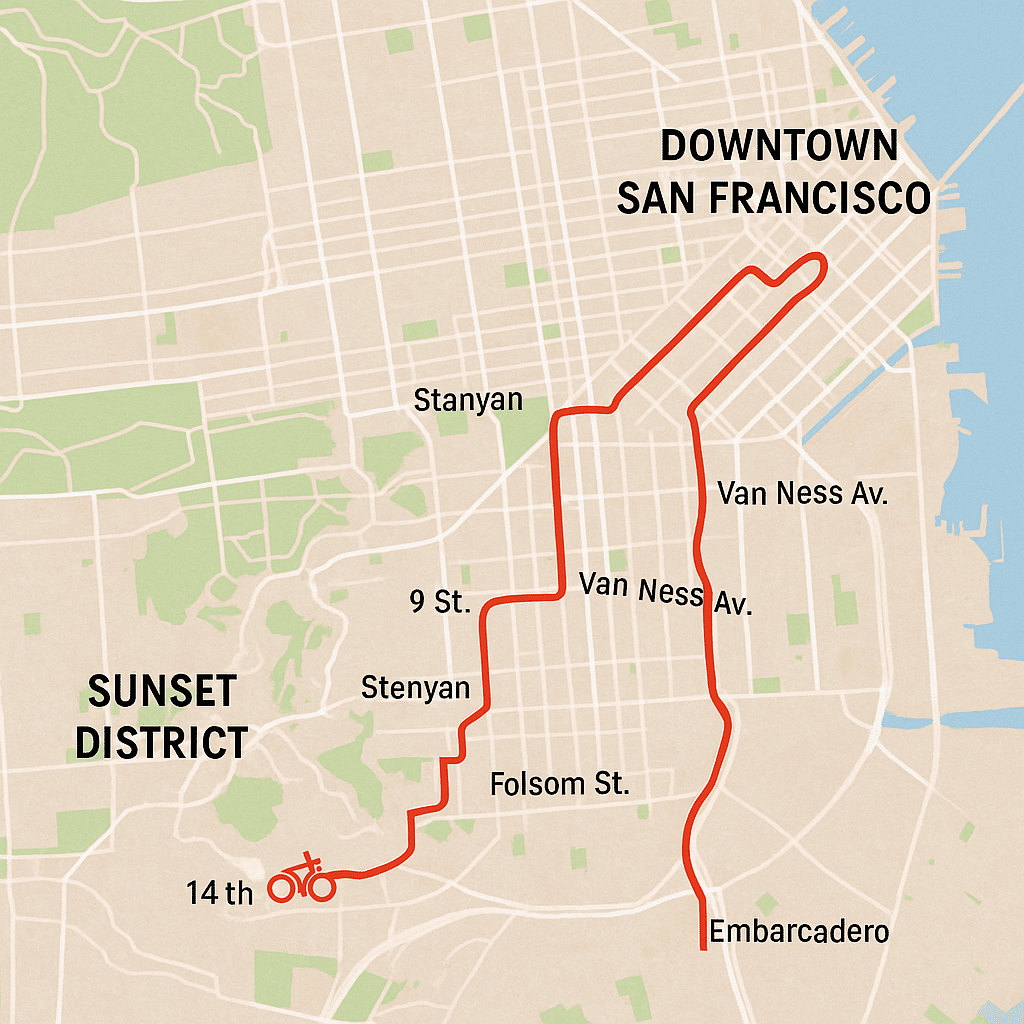
The average jumps to about 8.5 miles because, well, everything’s just spread out more.
Age and Demographic
Here’s something that surprised me about gender differences. Women bike commuters tend to stick to shorter distances—averaging about 4.8 miles compared to men’s 6.2 miles.

But before you jump to conclusions, it’s not about fitness or capability. Research shows women are more likely to prioritize safety and convenience, choosing shorter routes with better bike infrastructure rather than gutting out longer rides on sketchy roads.
Age plays a huge role too. Younger commuters (20s and 30s) average about 6.5 miles, while folks in their 50s and 60s typically stick to 4-5 miles. Makes sense, right? When you’re younger, you’re more willing to push through that extra fatigue.
Is it actually worth it?
The infrastructure factor is massive and something policymakers are finally starting to understand. In cities with dedicated bike lanes and proper cycling infrastructure, people are comfortable going 7-8 miles regularly. But in places where you’re sharing the road with angry drivers? Most people max out around 3-4 miles before saying “forget this.”
Time-wise, these distances translate to about 20-35 minutes of riding for most people, which is actually comparable to many car commutes when you factor in traffic and parking. That realization was what finally convinced me to give bike commuting a serious try.
Key Factors That Determine Your Ideal Commuting Distance
The first thing you gotta honestly assess is your fitness level, and I mean really honestly. Not the “I used to be athletic in high school” kind of honest. The thing people don’t know is most people aren’t bike commuting in your community so it’s important for you to know your distance threshold.
I’ve always been the person to jump into things and early on I had a bike that didn’t work long-distance. I learned that if I’m doing a long 8 mile commute it should be done on a road-bike and not a thick tire mountain bike.
However, if you have one, you probably do. A good place to start is commuting 2-3 miles max. You can always increase it later, but starting too hard just leads to burnout and sore knees.
Weather is a game-changer that varies so much by location. Living in Florida taught me that rain isn’t just rain—there’s drizzle (totally manageable), steady rain (doable with good gear), and then there’s that sideways wind-driven stuff that makes you question your sanity.

However, in places like the Vegas or Phoenix area, your mileage varies on the heat of the sun. And what people don’t tell you is certain plants that grow may affect your mileage when it comes to the tires as well. That’s another conversation though.
I’ve found that most people can handle about 20% longer distances in ideal weather versus crappy conditions. So if 8 miles feels perfect on a sunny 70-degree day, expect that 6 miles might be your limit when it’s 35 degrees and windy.
Think about it, you focus more on the weather on a cold 35 degree day compared to the 70 degree day where you’re focused on your route.
The infrastructure in your area basically caps your practical distance. Good bike lanes and paths can easily add 3-4 miles to what feels comfortable. Sharing the road with aggressive drivers? Most people max out around 4-5 miles before the stress outweighs the benefits.
Workplace facilities are make-or-break for longer distances. I once had a job with amazing bike storage and full shower facilities—I could easily handle 12+ mile commutes. My next job had neither, and suddenly anything over 5 miles left me feeling gross and unprofessional all day. If your workplace doesn’t have good facilities, factor in extra time and maybe stick to shorter distances where you won’t work up a major sweat.
Bike security is something people don’t think about until their bike gets stolen. Trust me on this one. If you can’t secure your bike properly at work or home, longer commutes become way more stressful because you’re constantly worried about your investment. I’ve seen people switch to shorter commutes just so they could use cheaper, less theft-worthy bikes.
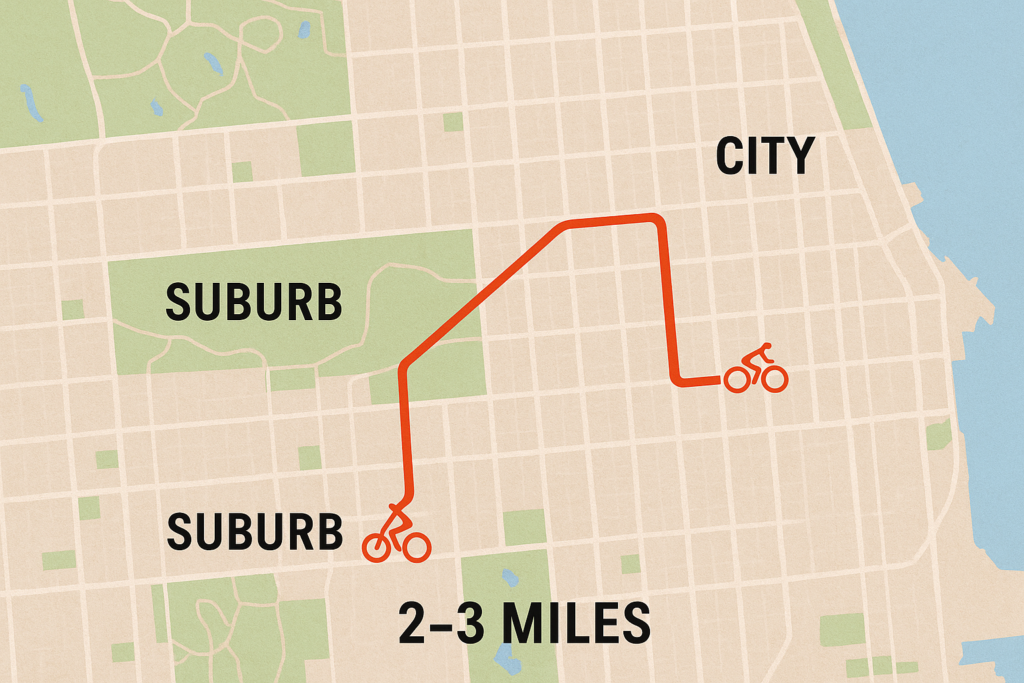
Family stuff is probably the biggest wildcard. Single with no kids? Sky’s the limit on commute time. But if you’re dropping kids off at school or dealing with unpredictable schedules, you need buffer time built in. I watched a coworker struggle with a 10-mile commute because she never knew if her kid’s daycare would call with an emergency pickup situation.
The sweet spot for most people ends up being that distance where even on your worst day—tired, stressed, bad weather—you can still complete the ride without it feeling like an epic struggle. For me, that turned out to be 6 miles, even though I can easily handle 12+ on good days.
Short Distance Commutes: 1-5 Miles (Perfect for Beginners)
Here’s something that’ll probably surprise you—my most successful bike commuting period was actually when I had the shortest commute of my life and my current situation. One mile from my apartment to downtown, and I’m not kidding when I say it makes me very fond of biking.
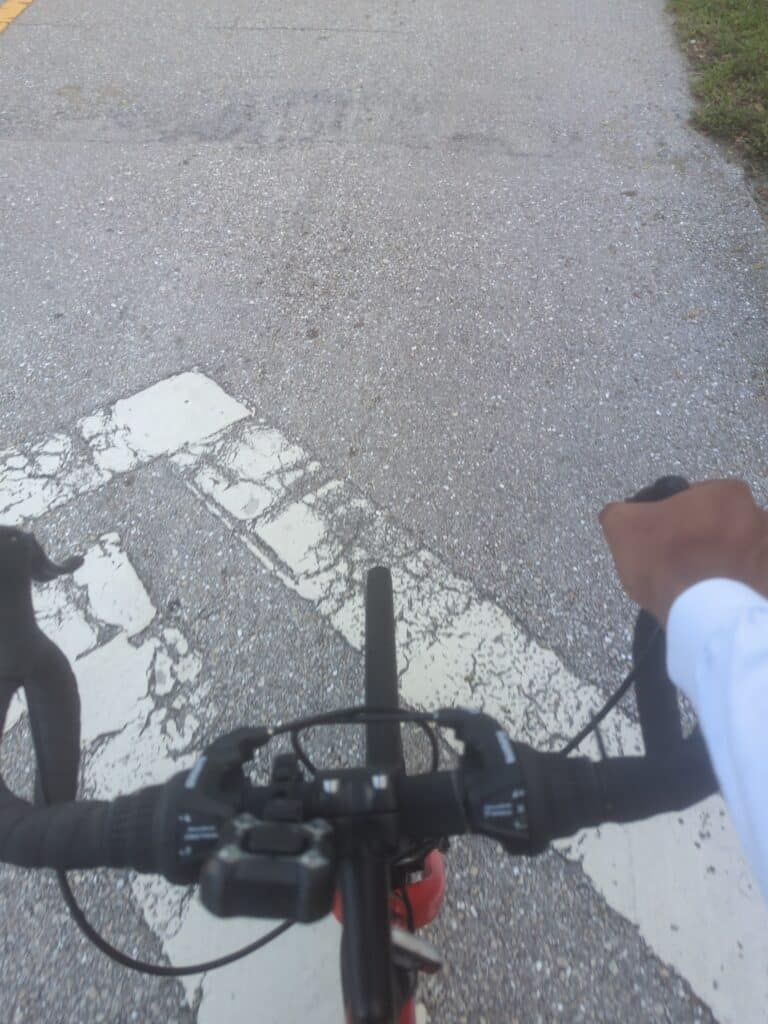
Those short rides turned into the foundation for everything else I learned about cycling. And the biggest benefit they get you outside the most. Being more enjoyable to most people than the long hauls. Also you get to go through awesome off-street paths like parks for some variety.
The beauty of short commutes is that they’re basically foolproof. Even if you’re completely out of shape, 3-4 miles isn’t going to destroy you.
Time-wise, short commutes are where bikes really shine in urban areas. My old 3-mile drive used to take anywhere from 12-20 minutes depending on traffic. Also taking an extra 4 – 5 minutes to park and get out of the car when downtown.
The bike? Consistently 12-14 minutes, every single time. No variables, no stress about finding a parking spot, no sitting in traffic getting frustrated. Also I can phase through blocked off streets.
The gear requirements for short distances are refreshingly minimal. I’m talking about a basic helmet, maybe a small bag for your stuff, and that’s pretty much it. You don’t need special clothes, shower supplies, or elaborate preparation routines. I literally rode in my work clothes most days—khakis and a button-down shirt worked just fine for a 3-mile cruise.
Here’s where I got smart about maximizing efficiency on shorter routes: I focused on consistency rather than speed. I figured out the exact route that felt safest and most pleasant, even if it wasn’t the absolute shortest. I learned where the traffic lights were timed well, which streets had the smoothest pavement, and where the sketchy intersections were that I should avoid during rush hour.
One trick that worked great for short commutes was making them part of a bigger routine. I’d stop at the coffee shop that was just slightly off my route, or swing by the grocery store on the way home. Suddenly my “short” bike commute was handling multiple errands and actually saving me time overall compared to making separate car trips.
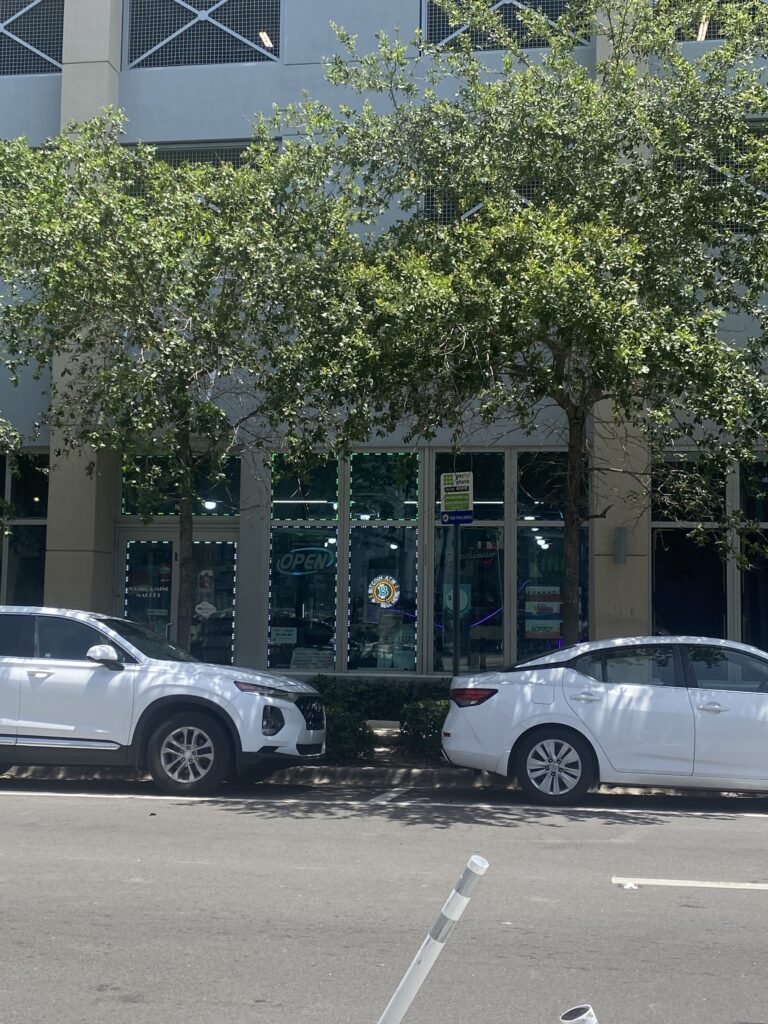
The challenges with short commutes are different than you’d expect. The biggest one? Weather becomes a bigger factor because you can’t just “power through” like on longer rides. When it’s raining, a 3-mile bike ride doesn’t feel much different from a 3-mile walk in terms of getting soaked. I ended up investing in really good rain gear even for short distances.
Another weird challenge is that short commutes can feel “not worth it” on bad days. When you’re tired or stressed, the idea of driving 3 miles seems way easier than dealing with the bike. I solved this by making a rule—I had to bike at least 3 days per week, no matter what. Having that minimum commitment kept me from making excuses.
Storage and security become trickier with short commutes because you’re not necessarily going somewhere with great bike facilities. My downtown office had terrible bike parking, so I ended up getting a cheaper commuter bike that I wasn’t worried about leaving locked up outside. Best decision ever—removed all the stress about theft.
The bottom line is that short commutes are the perfect training ground for bike commuting. They let you figure out all the logistics without the physical demands of longer distances. Plus, once you get hooked on that daily dose of fresh air and exercise, longer distances start feeling way more manageable.
The Right Amount of Distance Commutes: 5-10 Miles (The Sweet Spot)
Okay, let’s talk about what I consider the Goldilocks zone of bike commuting—that magical 5-10 mile range where everything just clicks into place. After years of experimenting with different distances, I can tell you this is where most people find their groove, and there’s some solid science behind why it works so well.
My current commute of actual bike time per say the airport is like 5 miles each way, and I honestly think it’s perfect. It’s long enough to feel like real exercise and give me that endorphin boost, but short enough that I’m not completely wiped out when I arrive and by the way that’s getting to the train station. Don’t forget, public transit is not completely off the table and becomes a tool for a bike.
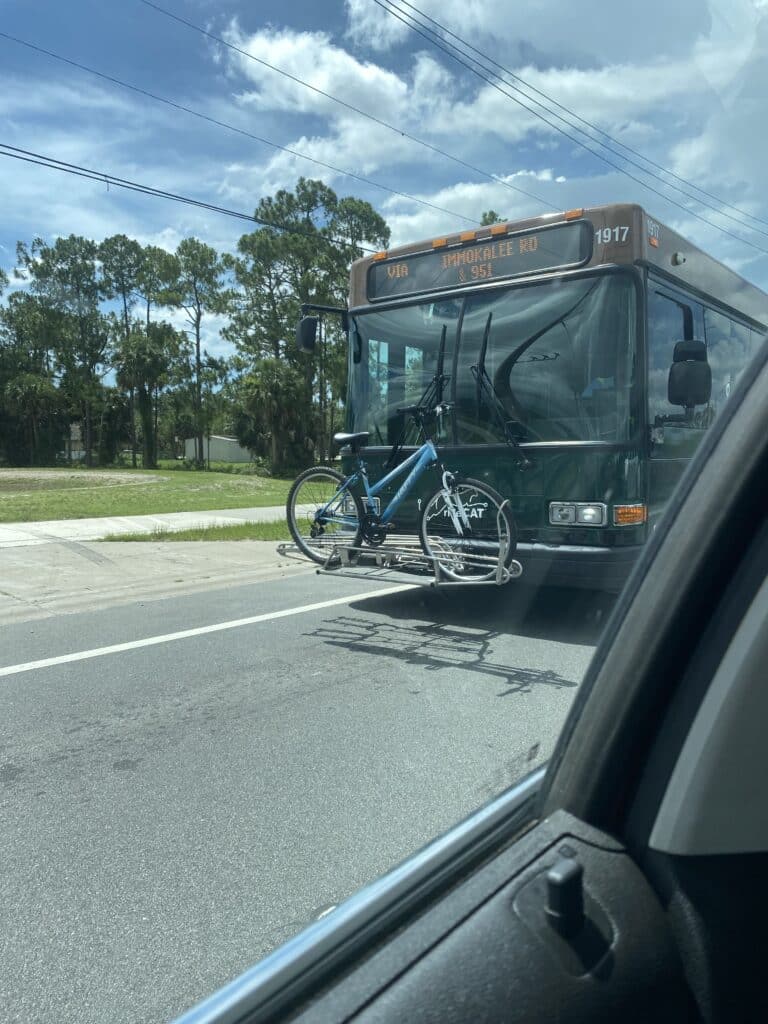
Here’s why this distance range works for most people—it’s enough to actually improve your fitness over time, but not so much that it becomes this huge time commitment or requires serious athletic preparation. When I was doing 3-mile commutes, on a good day there’s almost no swear and I could ride without even touching handle-bars. A lot of people go to the gym so 5 miles to 8 miles is a sweet spot once you practice a good amount, and still be ready for work.
The time commitment is definitely more significant than shorter commutes, but it’s still totally manageable for most people’s schedules. You’re looking at about 25-40 minutes each way, plus prep time. I usually budget a full hour in the morning—15 minutes to get ready, 30 – 40 minutes riding, and if I do change it’s 10 minutes at work. It sounds like a lot, but honestly, it’s less time than many people think and could be even less than driving depending on how bad traffic affects you.
Building endurance for medium distances requires some patience. I didn’t just jump from 3 miles to 8 miles overnight. I added about half a mile per week until I worked up to my target distance. The key is consistency—it’s better to ride a slightly shorter distance five days a week than to burn yourself out trying to go too far too fast. Your legs will adapt, but it takes time.
Route planning gets more complex because you’re covering enough distance that elevation changes and road surfaces really start to matter. My old route has one killer hill at mile 3.5 for a highway crossing that used to destroy me, so I spent time finding an alternate path that’s slightly longer but more manageable. Tools like Strava or Google Maps / Apple Maps cycling directions become really useful for finding routes that prioritize bike lanes and avoid heavy traffic.

Weather backup plans become essential at this distance because you’re investing serious time in each ride. I have a few different strategies depending on conditions. Light rain? I have good rain gear and just deal with it. Heavy downpour or ice? I drive or take public transit. Extreme heat? I leave earlier to avoid the worst of it, or sometimes just drive if it’s over 95 degrees.
The mental game changes too at medium distances. Short rides are over before you know it, but 30 minutes gives you time to actually think, decompress, or listen to podcasts. I found that my medium-distance commutes became this valuable transition time between home life and work life. It’s like built-in meditation time that happens to involve exercise and allows you to breathe calmly.
One thing nobody warned me about—bike maintenance becomes more important when you’re putting on 80+ miles per week. I had to learn basic stuff like checking tire pressure regularly, cleaning my chain, and knowing when brake pads need replacing. Nothing too complicated, but definitely more involved than when I was only riding occasionally. Trust me, you’ll want to lube your chain at least every 500 miles.
Bottom line—if you can handle the time commitment and have decent infrastructure in your area, the 5-10 mile range really is the sweet spot where bike commuting becomes both practical transportation and legitimate exercise. It’s challenging enough to feel accomplished but not so intense that it takes over your whole morning routine.
When Bike Commuting Distance Becomes Impractical
Okay, this is probably the hardest lesson I had to learn about bike commuting, and it took me way too long to admit it to myself. There absolutely is a point where bike commuting stops making sense, and recognizing that point can save you from months of frustration, burnout, and potentially some serious health issues.
I haven’t personally gone too crazy on the commute, but 18 – 19 miles round-trip isn’t a possible distance for most people, even me. I did this trek one time and it killed me as far as I went, especially using a nasty cheap mountain bike back as a kid going 7 miles out of my way.
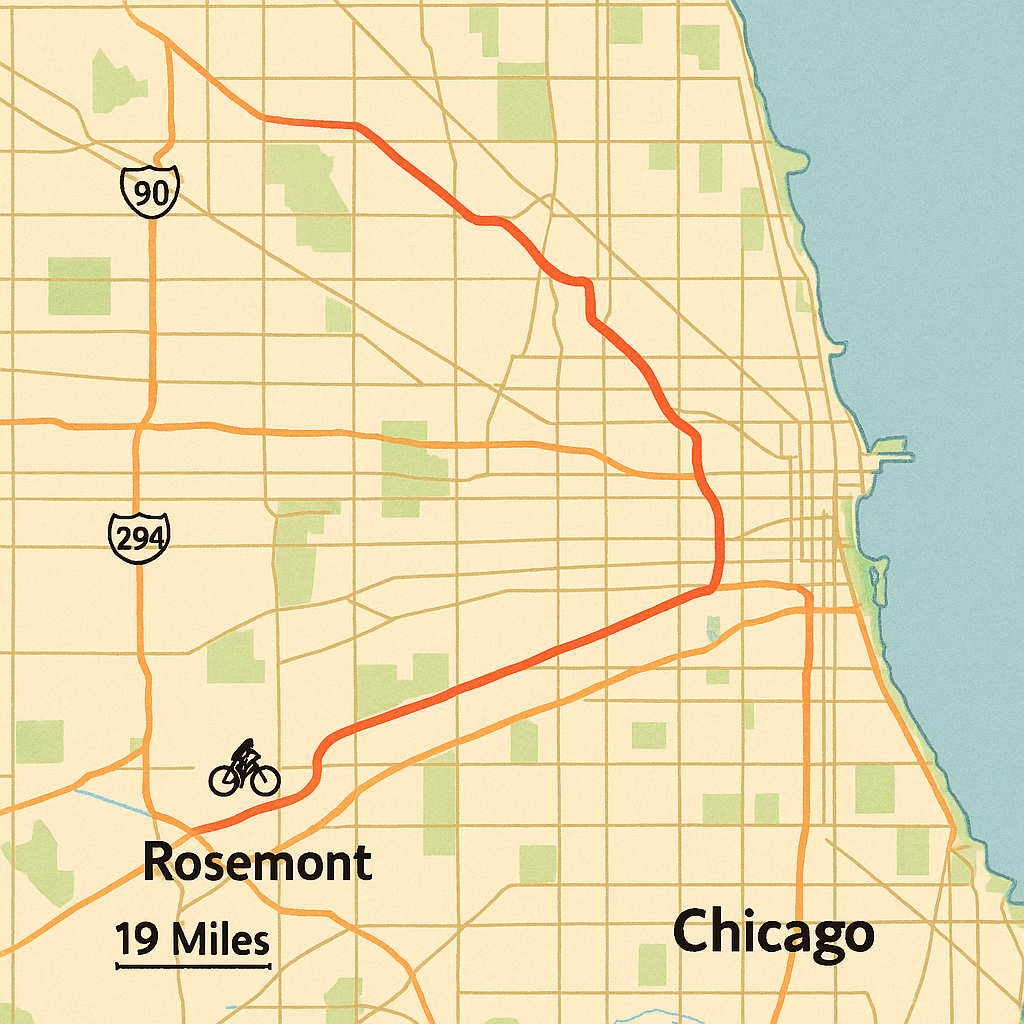
The first red flag that hit me was the amount of time it took for me to get there at least a hour 30. That’s not sustainable long-term, especially if you have family obligations or any kind of social life. I’ve heard about people having to wake-up at 5:30 to try to get to work at 7:30 or 8:00 doing their super long bike commute over 20 miles roundtrip.
Another major warning sign is if you’re consistently dreading your rides. Bike commuting should feel challenging but rewarding, not like this awful thing you have to endure twice a day. I remember lying in bed hitting the snooze button and feeling genuine anxiety about the ride ahead—that’s when I knew something was seriously wrong with my approach.
Alternative solutions exist that I wish I’d considered earlier. The most obvious one is moving closer to work, but that’s not always financially feasible or desirable for other reasons. Another option is negotiating remote work days to reduce the frequency of long commutes. Even working from home 1-2 days per week can make longer bike commutes more sustainable for the remaining days.
Combining cycling with public transportation opened up possibilities I hadn’t really considered seriously. My city has bike racks on buses, so I could ride 8 miles to a transit hub, then take the bus for the remaining distance. However, in my city a big issue is the buses are the same speed overall as biking due to the route in someways. So what I do is I’ll start biking and if I catch the bus route I’ll hop on to save some time.
E-bikes honestly changed the game for longer distances, though they come with their own considerations. When I finally tried an e-bike for my problem commute, the time dropped from over an hour to about 40 minutes even with my cheap Jetson, and I wasn’t completely destroyed. The assist made headwinds and hills manageable, and I could maintain consistent speeds regardless of how tired I felt. Biggest issues is that since e-bikes are so new and misunderstood, they cost a lot more than acoustic.
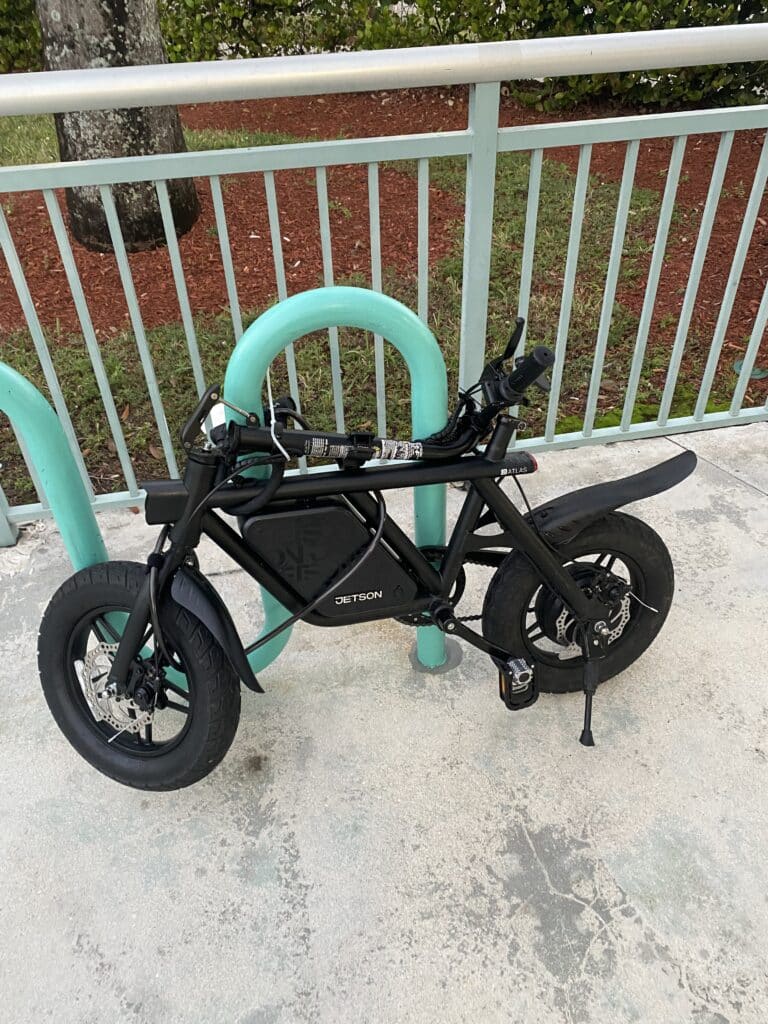
short enough that I’m not completely wiped out when I arrive and by the way that’s getting to the train station. Don’t forget, public transit is not completely off
The cost-benefit analysis gets more complex with longer distances. Yes, I was saving money on gas and parking, but I was also spending more on bike maintenance, gear, and occasionally backup transportation. Plus, the time cost became significant—time I could have spent with family, on hobbies, or just relaxing. When I actually calculated my hourly “savings” from bike commuting, it wasn’t as impressive as I’d initially thought.
Flexible commuting strategies can help extend the practical range of bike commuting. Maybe you bike 3 days per week and drive 2. Maybe you bike during good weather and use backup transportation when conditions are poor. Maybe you do shorter bike commutes during busy work periods and longer ones when your schedule is more relaxed.
The hardest part is admitting when something isn’t working and being flexible enough to change your approach. I wasted months trying to force a solution that fundamentally wasn’t sustainable for my situation. There’s no shame in recognizing that your ideal bike commuting distance might be shorter than you initially hoped, or that certain times of year require different transportation strategies.
Bottom line—bike commuting should enhance your life, not dominate it. If you’re constantly struggling, stressed, or exhausted, it’s time to honestly evaluate whether your current approach is actually working or if you need to adjust your expectations and find a more sustainable solution.
Conclusion
Finding your perfect bike commuting distance isn’t about pushing limits or comparing yourself to hardcore cyclists—it’s about discovering what works sustainably for your lifestyle, schedule, and goals. Whether you land in the 2-mile beginner category or find yourself drawn to 15-mile adventures, the most important factor is consistency and enjoyment of your daily rides.
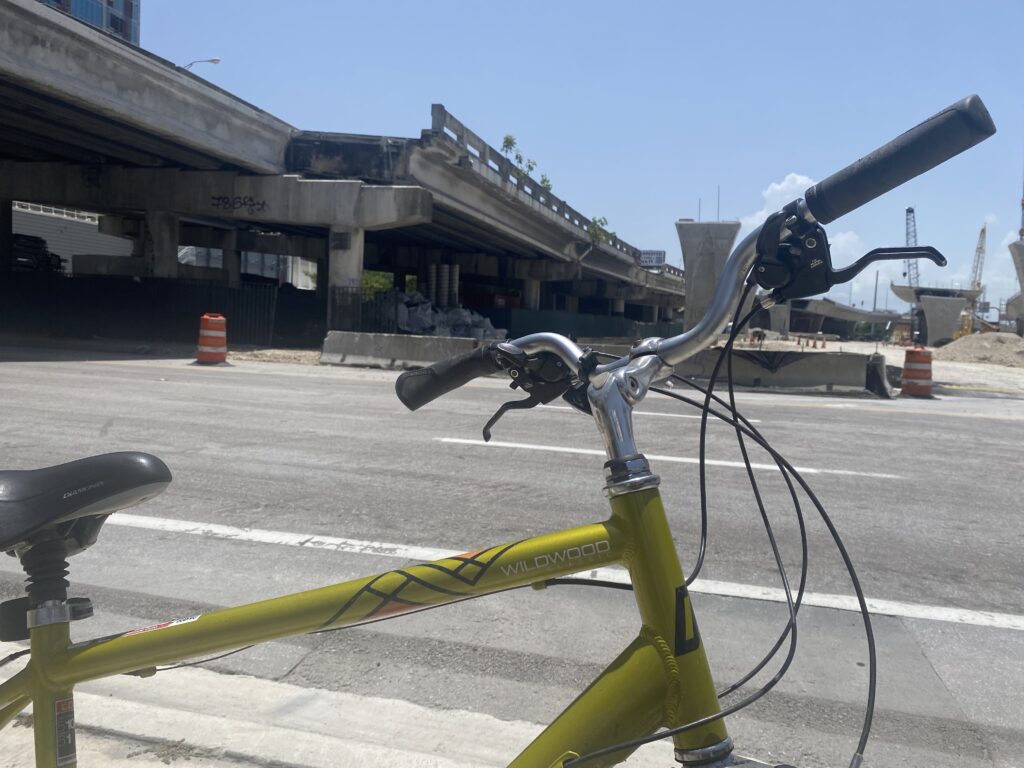
Remember, your ideal distance can evolve over time! What feels challenging today might become your comfortable baseline in six months. Start conservatively, listen to your body, and gradually expand your comfort zone as your fitness and confidence grow. The health benefits, cost savings, and pure joy of bike commuting are worth the effort to find your sweet spot.
Most successful bike commuters find their groove somewhere in that 5-10 mile range, but don’t let statistics dictate your personal journey. Use the strategies and factors we’ve discussed to make an informed decision that fits your unique situation. Ready to transform your daily commute into something you actually look forward to? Start planning your route today and join the growing community of bike commuters who’ve discovered that the journey really can be just as rewarding as the destination!

